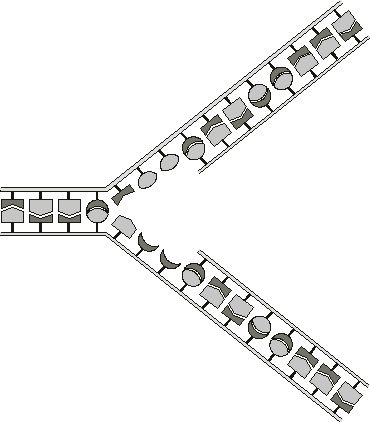When in 1953 James D. Watson and Francis Crick proposed the model for the double helix, the mechanism of DNA replication became obvious to all, and it was only a matter of time to isolate and study the essential participants and understand the details of the mechanism. The complementary, double-stranded DNA molecule opens itself and each strand serves as template for the synthesis of the respective complementary strand
(Figure 1.2). For instance, when a virus replicates within a cell, it copies its genome hundreds of times, forming hundreds of new virions in a few minutes.

Figure 1.2. Replication of DNA molecules. Each strand acts as a template for a new, complementary strand. When copying is complete, there will be two daughter DNA molecules, each identical in sequence to the mother molecule.
As fundamental as it is in biology (not only in DNA replication but also in DNA repair), the double-stranded nature of DNA molecules is of little use to replicate the genomes in a computer system like GEP or GAs, where single-stranded chromosomes are copied using simple computer instructions. More important to us are the modifications that allow the creation of genetic diversity. In the
next section, I will briefly analyze the fundamental mechanisms of genetic variation.
|
